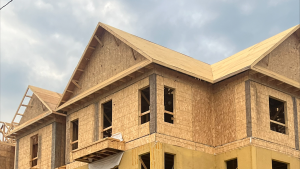A recent decision by the Alberta Court of Appeal underscores the importance of drafting limitation of liability clauses carefully.
"Contracting parties often attempt to limit the types of risks or damages they may be liable for if there are problems on a project," said Matthew Swanson, a commercial litigator with Borden Ladner Gervais LLP, whose practice is focused on contract and construction disputes.
"In these sorts of situations, a contracting party may seek to include a limitation of liability clause in the contract," he said. "If a party wants to include such a clause, they should ensure it covers the broad array of events where liability could arise."
In the case in question, the court had to consider a limitation of liability clause that seemed to put a cap on the liability of an architect and its sub-contracting engineer.
The clause was contained in a contract between the architect and one of the two owners of the land.
In the course of the project, the engineer, to whom the seismic design had been subcontracted by the architect, made representations that revisions to the design had been made that brought it into compliance with the building code.
It turned out, however, that the revisions did not, in fact, comply with the code, but the contracting and non-contracting owners weren’t aware of the noncompliance.
The contracting and non-contracting owners sued the architect and the engineer.
The contracting owner sued the architect for breach of contract and the contracting owner and the non-contracting owner sued the engineer for, among other things, negligent misrepresentation.
The court made two key findings.
First, the limitation of liability clause did not extend to the non-contracting owner.
The non-contracting owner was not seen to have expressly agreed to the limitation of liability and was not bound by the contracting owner’s agreement.
Second, the court found that the limitation of liability clause did not cover claims for negligent misrepresentation.
"The decision is a reminder that limitation of liability clauses will be strictly construed," Swanson said.
"Parties who negotiate these sorts of clauses should be mindful of all the parties for whom the work is being performed, and should take care to ensure that these people are made to be a party to the contract. It is also important that they ensure the limitation of liability clause covers all matters they wish to limit liability for.
Whether or not limitation of liability clauses have been drafted carefully, there has been an increase in the number of construction professionals relying on them, said Renata Germann, an associate lawyer with Jenkins Marzban Logan LLP.
"But, as in the Alberta decision, the clause might not apply," she said.
"Therefore, you should tailor your contract to the specific project, read it carefully and be sure you understand it before you sign. If you don’t like a clause, negotiate it."
Glen MacRae, claims manager with Wilson M. Beck Insurance Services Inc., said that for limitation of liability clauses to work, they must be legally enforceable.
"So, a design professional must fight on two fronts to defend against allegations of wrong doing," he said.
"They must defend the allegations themselves and also seek to enforce the limitations of liability they seek to rely on. Without insurance, the design professional – firm or individual – will have to dip into their savings to defend their interests. An insurance policy, with certain exceptions, will respond to allegations of error, omission, or negligence that gives rise to a demand for damages."
Jeff McLellan, the western region architects and engineers practice leader at
BFL CANADA Insurance Services Inc., said construction professionals should ensure they recognize and understand all the risks in a project and that any agreement is balanced and does not go beyond what is covered under their professional liability insurance.
McLellan said there are some items in contractual agreements that should be avoided by architects and engineers.
This includes the requirement to defend their client or others; fines and penalties for delays or not attaining LEED certification and liability limits that exceed the amount of available professional liability insurance.
Construction professionals themselves are sometimes the source of their limitations of liability problems.
"My clients do what they do because they are interested in design and the built environment, not because they wanted to be business people," McLelllan said.
"I prefer getting contacted to discuss and review contracts (before they are signed)," he said.
"Once they are signed, it is difficult to undo or change these issues."











Recent Comments
comments for this post are closed